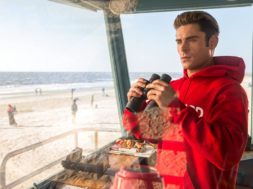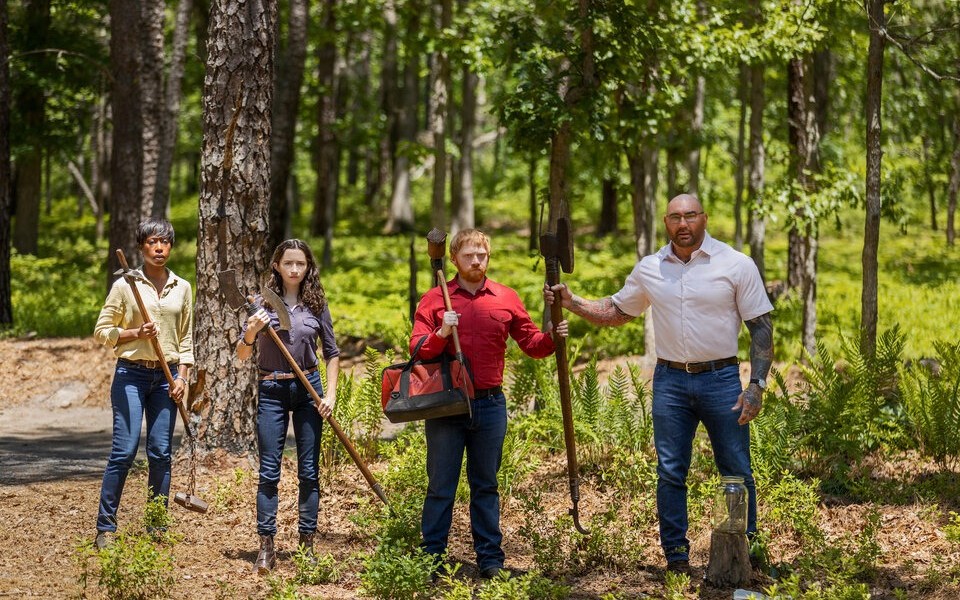
The latest taut horror-thriller from M. Night Shyamalan, Knock at the Cabin has arrived on 4K Ultra HD, Blu-ray, and DVD. While there’s no audio commentary, the home video releases include four making-of featurettes: “Choosing Wisely: Behind the Scenes of Knock at the Cabin,” “Tools of the Apocalypse,” “Drawing a Picture,” and “Kristen Cui Shines a Light.”
Totalling about 35 minutes, these extras feature insight from Shyamalan, actors Dave Bautista, Jonathan Groff, Ben Aldridge, Nikki Amuka-Bird, Abby Quinn, Rupert Grint, and Kristen Cui, and several key crew members.
Here are seven things I learned from the Knock at the Cabin Blu-ray…
1. Knock at the Cabin came to Shyamalan as a producing opportunity.
Shyamalan originally received the Knock at the Cabin script by Steve Desmond and Michael Sherman as a producing opportunity via his Blinding Edge Pictures before deciding to work on the screenplay and board the project as director.
“It organically came into my life,” Shyamalan explains. “It came as a producing opportunity. I think the premise of the book just stayed with me so much, and I started to kind of fall in love with the idea and just let my mind feely go to, ‘How would I tell this story?’ or ‘What would be best for this story?’”
2. The premise resonated with Shyamalan and the cast.
“The idea of telling large-scale, Biblical stories but in modern times and in modern settings is resonating with me,” enthuses Shyamalan. “Knock at the Cabin is that, is this kind of incredible opportunity for us to experience this gigantic, global, Biblical story, but just through the experience of a family of three.”
The cast was also captivated by the material. “When I read the script, I was breathless through the entire thing. I felt great anxiety and confusion and excitement and shock and horror,” exclaims Groff. Amuka-Bird adds, “I was gripped from beginning to end. I was terrified.”
“It kind of combined two of my biggest nightmares: home invasion and the apocalypse,” Grint notes. “It stayed with me a long time, because it forces you to kind of put yourself in a situation and think what would you do.”
3. Knock at the Cabin deviates from the source material.
Knock at the Cabin is based on Paul Tremblay’s 2018 novel, The Cabin at the End of the World. While the two set-ups are essentially identical, the movie’s third act radically deviates from the source material.
“It’s very unusual, in that we adapted a book to make this movie but essentially went in an entirely different direction around the midway point of the story. That weighed on me a little bit,” confesses Shyamalan. “In my mind, the story needed and wanted to go this way very strongly, and in fact that was the exciting part of the challenge. Can I make a movie about a very horrific Sophie’s choice, and can I get the audience there to make that decision with the main characters?”
4. The film’s gay representation was important to Shyamalan.
Although Knock at the Cabin deviates from the book, Shayamlan maintained the central characters being a same-sex couple with an adopted daughter. It was important to him to cast gay actors in the parts of the fathers.
“Telling a story that would normally have been told with a typical husband-wife story and having it told with these two people; super, super moving. As a viewer, watching as we shot this and made this, I was feeling things that I never felt before for protagonists. I was seeing dynamics that were fresh and new.”
The representation also impacted the actors. “Something that attracted me to it and that I love about it is that it’s about a same-sex parented family, and they are central to the story. Their queerness is part of the story but it’s not the story,” Aldridge notes. “We are pinching ourselves that we get to be in this Hollywood horror movie as gay actors playing gay characters in an M. Night Shyamalan movie,” Groff says.
5. Shyamalan meticulously storyboarded the entire film.
While his visual style constantly evolves, Shyamalan meticulously storboards every movie so he knows exactly what he wants and needs before stepping on set. Brick Mason — Shyamalan’s go-to storyboard artist since The Sixth Season, with other credits including The Amazing Spider-Man 2, A Beautiful Mind, and True Detective — is no stranger to the process:
“When he’s finished writing the script, storyboarding is the next big phase, and he’s converting those words into pictures. He wants to see in his head every single shot. In the end, when he gets it the way he wants it, he sticks [to the storybaords] way more closely than pretty much any director that I’ve ever worked with.”
Shyamalan explains, “I’ve spent five, six, seven, eight months alone thinking about that, and every color, every choice, every fabric, every frame, every single frame has been chosen to maximize the emotional impact of the characters.”
Mason continues, “By the time he’s done storyboarding and he’s explored the emotions of every single character in every single scene, the storyboards are in a sense like a bible to him for that project.”
6. Shyamalan does not shoot standard film coverage.
Since the storyboarding process affords Shyamalan the knowledge of exactly what he needs, he does not shoot standard film coverage (a wide master shot, close ups, etc. for every scene). He rehearses with the cast like a play and then aims to get three good takes each with something unique.
“I want to feel that electricity in the performance, that unexpected thing of realness, and I want it three times. Why I want it three times is, there’s a relationship to everything that we’re putting next to each other. That thing that was so beautiful-angry or so beautiful-vulnerable or beautiful-soft or -scared won’t play with the previous scene or the previous thing. The juxtaposition, it’s always about the family and how they interact together, so I try to get at least three amazing takes of slightly different colors so that I have a little bit of pliability. This color vs. this color creates this experience.
“Sometimes you only get one that really has that electricity, and when I have to move onto another shot with that feeling that I have one — and it’s rare that I would move on — I’m very nervous, because I know there’s a high probability that that won’t be the perfect color against this other thing, and I have nowhere to go because I don’t do coverage.”
7. Shyamalan challenged the art department to design makeshift weapons for the film.
Seeing them as emblematic of the movie’s core, Shyamalan placed an importance on the makeshift weapons that the strangers carry. He described it as a bake off, challenging the art department to concoct deadly combinations of tools, farming equipment, and othet sharp objects.
“We started putting ourselves in the character that is making the weapon, and it was like, if it’s hard for us, it doesn’t make sense for the film,” explains production designer Naaman Marshall. “We’re talking about people who just got the vision. That started changing our techniques about how we went about it, and it very much became about finding parts that were visual, that they might have seen in a vision. It started driving the actual visual of the weapons by the process at which we thought these people would be able to make them.”
Each of the four weapons — nicknamed by the crew as cowkiller, sleeper, morning star, halberd — were crafted in firm, medium and soft versions for various uses.
Knock at the Cabin is available now on 4K UHD, Blu-ray, and DVD via Universal.
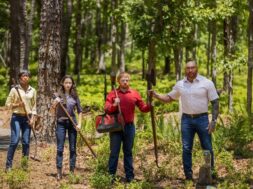
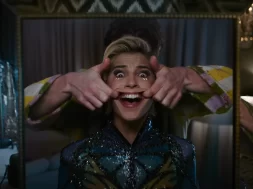
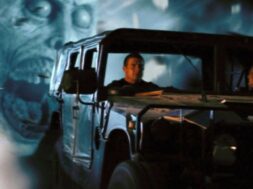
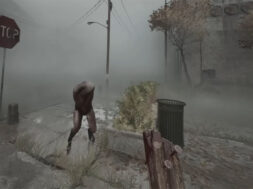
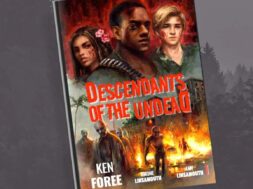
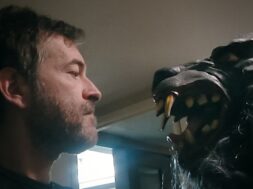
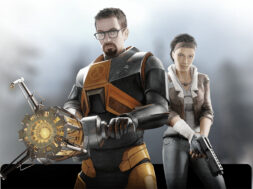
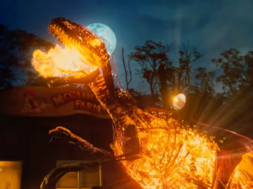
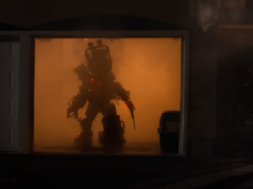
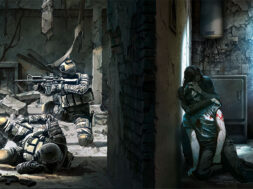


!['Knock at the Cabin' Trailer Proves the Apocalypse Is REAL! [Video]](https://i0.wp.com/bloody-disgusting.com/wp-content/uploads/2022/12/Screen-Shot-2022-12-25-at-1.56.44-PM.png?w=1200&ssl=1)






